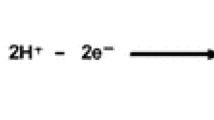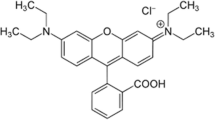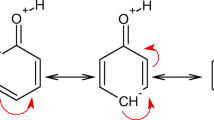Abstract
The biological activity of two classes of chlorinated monoterpenes formed during the bleaching of kraft pulpedPinus radiata was assessed. The chlorinated monoterpene alcohols were base labile with a 94% decrease in concentration being observed within 4 h at pH 12. The chlorinated monoterpene hydrocarbons exhibited a lesser degree of alkaline lability. Acute toxicity tests on the monoterpene alcohols gave EC50 concentrations of 60–200 mg/L, indicating that these compounds display relatively low toxicity. The monoterpene alcohols were also tested for mutagenicity and genotoxicity. Some of these compounds produced mutagenic and genotoxic responses. The chlorinated monoterpene alcohols were determined to have log Kow values of 1.24–1.52, indicating a low bioaccumulation potential. The monoterpene hydrocarbons had higher log Kow values (approximately 3.6) and might be expected to bioaccumulate. Treatment of the chlorination stage effluents in an aerated lagoon treatment system removed 80% of the chlorinated monoterpene alcohols but only a small fraction of the monoterpene hydrocarbons. On the basis of these results it is concluded that whilst the chlorinated monoterpene alcohols are unlikely to produce significant environmental impacts, the hydrocarbon compounds may persist and bioaccumulate in recipient ecosystems.
Similar content being viewed by others

References
Bjorndal H, Solyom P (1987) Chemical and physical properties of chlorinated organic compounds and their treatability. Report B-876, Swedish Environmental Research Institute, Sweden
Blaise C, Legault R, Bermingham N, Coillie RV, Vassuer P (1986) A simple microplate algal assay technique for aquatic toxicity assessment. Toxicity Assess Int Quart 1:261–281
Hawker DW, Connell DW (1988) Influence of partition coefficient of lipophilic compounds on bioconcentration kinetics with fish. Water Res 22:701–707
Hickey CW (1989) Sensitivity of four New Zealand cladoceran species and Daphnia magna to aquatic toxicants. New Zealand J Mar Freshwater Res 23:131–137
Holmbom B, Voss RH, Mortimer RD, Wong A (1984) Fractionation, isolation and characterisation of Ames mutagenic compounds in kraft chlorination effluents. Environ Science Technol 18(5):333–337
Hrutfiord BF, Froberg TS, Wilson DF, Wilson JR (1975) Organic compounds in aerated stabilisation basin discharge. Tappi J 58(10):98–100
Kopperman HL, Hallcher C, Riehl A, Carlson RM, Caple R (1976) Aqueous chlorination of α-terpineol. Tetrahedron 32:1621–1626
Kringstad KP, Ljungquist PO, de Sousa F, Strömberg LM (1983) Stability of 2-chloropropenal and some other mutagens formed in the chlorination of softwood kraft pulp. Environ Sci Technol 17(8): 468–471
Lyman WJ, Reehl WF, Rosenblatt RH (1990) Handbook of chemical property estimation methods: Environmental behavior of organic compounds. American Chemical Society, Washington, DC
Maron DM, Ames BN (1983) Revised methods for theSalmonella mutagenicity test. Mutation Res 113:173–215
Priha MH, Talka ET (1986) Biological activity of bleached kraft mill effluent (BKME) fractions and process streams. Pulp Paper Can 87:143–147
Quillardet P, Hofnung M (1985) The SOS Chromotest, a colorimetric bacterial assay for genotoxins: Procedures. Mutation Research 147:95–98
Ribo JM, Kaiser KLE (1987)Photobacterium phosphoreum toxicity bioassay. I. Test procedures and applications. Toxicity Assess Int Quart 2:305–323
Stuthridge TR, Campin DN, Langdon AG, Mackie KL, McFariane PN, Wilkins AL (1991) Treatability of bleached kraft pulp and paper mill wastewaters in a New Zealand aerated lagoon treatment system. Water Sci Technol 24(3/4):309–317
Stuthridge TR, Wilkins AL, Langdon AG, McFariane PN, Mackie KL (1990) Identification of novel chlorinated monoterpenes formed during kraft pulp bleaching ofPinus radiata. Environ Sci Technol 24(6):903–908
Suntio LR, Shiu WY, Mackay D (1988) A review of the nature and properties of chemicals present in pulp mill effluents. Chemosphere 17(7): 1249–1290
Xie TM, Hulthe B, Folestad S (1984) Determination of partition coefficients of chlorinated phenols, guaiacols and catechols by shake-flask GC and HPLC. Chemosphere 13(3):445–459
Author information
Authors and Affiliations
Rights and permissions
About this article
Cite this article
Stuthridge, T.R. Biological activity of chlorinated monoterpenes formed during kraft pulp bleaching ofPinus radiata . Arch. Environ. Contam. Toxicol. 24, 113–119 (1993). https://doi.org/10.1007/BF01061098
Received:
Revised:
Issue Date:
DOI: https://doi.org/10.1007/BF01061098



